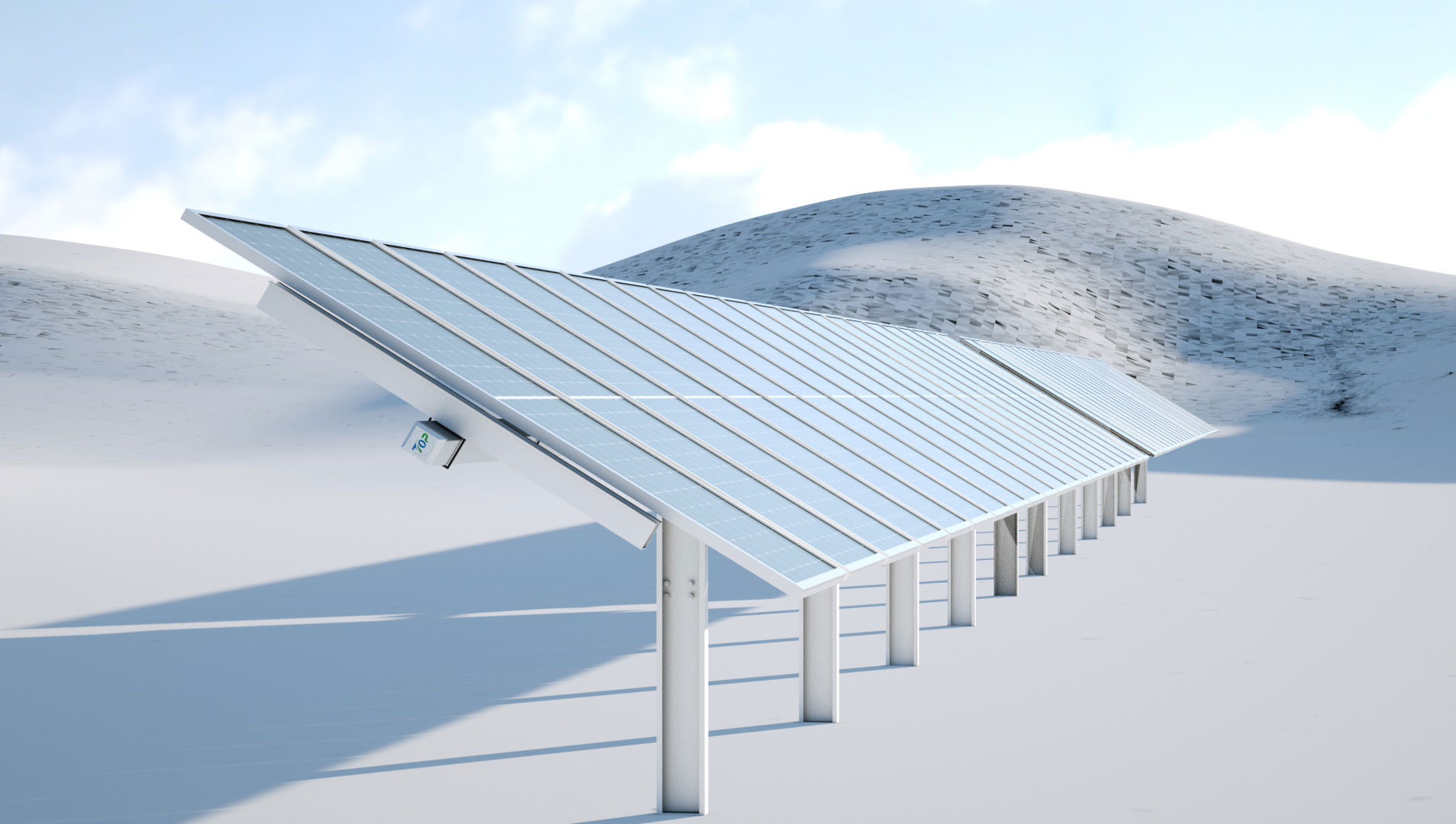When it comes to optimizing the efficiency of a solar panel system, one key decision is whether to use a fixed solar panel mount or a single-axis solar tracker. Both have their advantages and disadvantages, and the choice depends on various factors such as location, weather conditions, and budget.
A fixed solar panel mounting system, as the name suggests, is a stationary panel that remains in one position throughout the day. It is a simple and cost-effective solution that requires minimal maintenance. However, a fixed panel is not always the best option as it does not adjust its position to the sun's angle, resulting in a reduction in energy output. This reduction is particularly significant in regions where the sun's angle changes drastically throughout the day, such as near the poles.
On the other hand, a single-axis solar tracker is a system that moves the solar panel to follow the sun's movement from east to west throughout the day. The tracker has a motor that rotates the panel at a fixed angle, thereby ensuring that the panel is always perpendicular to the sun's rays. This system increases the efficiency of the solar panel by 20-40%, depending on the location, and produces more energy than a fixed solar mount.

One of the benefits of a single-axis tracker is that it can be programmed to optimize the panel's position based on the season and time of day. This feature makes the system more efficient and helps maximize energy output. The single-axis tracker is particularly useful in areas with high variations in the sun's angle, such as near the equator, where the sun's angle changes significantly throughout the year.
However, a single-axis solar tracker comes with some downsides as well. One of the main concerns is the cost of installation, which is typically higher than that of a fixed solar panel mount. Additionally, a solar tracker system requires more maintenance than a fixed pv mount. The moving parts of the system, such as the motor and gears, need regular cleaning and lubrication to ensure their smooth operation.
Another factor to consider is the climate conditions of the location. In areas with high wind speeds, the moving parts of the tracker can be damaged, leading to costly repairs. Moreover, the tracker's motion can cause shading on neighboring panels, resulting in reduced energy output.
In conclusion, whether a fixed pv solar mount or a single-axis tracker is better depends on the specific situation. While a solar fixed mount is a simple and cost-effective solution, a single-axis tracker can significantly increase the efficiency of a solar panel system. A single-axis tracker is particularly useful in areas with high variations in the sun's angle, but it also comes with a higher installation cost and maintenance requirements. Before deciding which system to use, it's crucial to consider factors such as location, weather conditions, and budget. Ultimately, both options have their advantages and disadvantages, and the choice depends on the user's specific needs and goals.

 Xiamen TopFence Co.,Ltd.
Xiamen TopFence Co.,Ltd. No. 77, LingXia South Road, Huli District, Xiamen City, Fujian, China
No. 77, LingXia South Road, Huli District, Xiamen City, Fujian, China Tel: +8613365923720
Tel: +8613365923720
 Email: info@xmtopfence.com
Email: info@xmtopfence.com
 IPv6 network supported Sitemap
| XML
| Blog
| Privacy Policy
IPv6 network supported Sitemap
| XML
| Blog
| Privacy Policy


